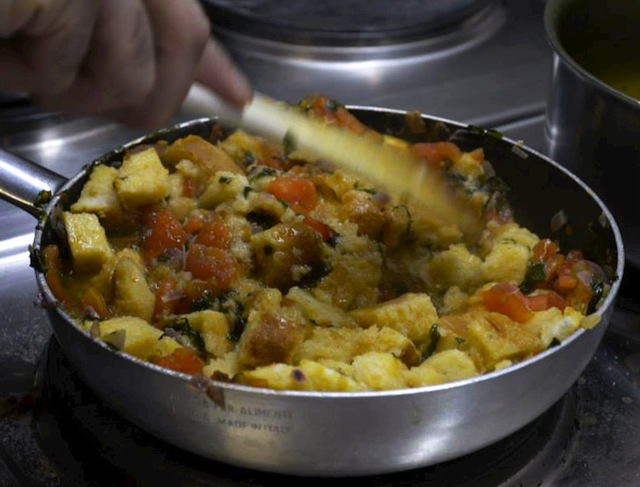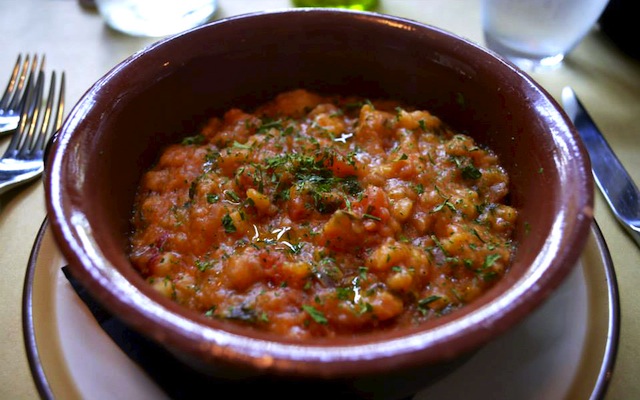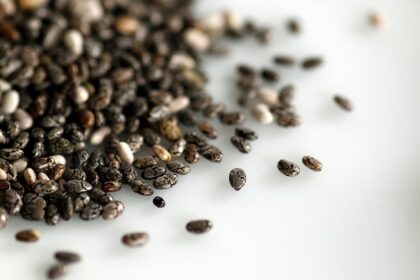
The food found in the Tuscany region of Italy is known for its sustainable preparation and pure flavors. Additives in many meals aren’t unpronounceable ingredients like acesulfame potassium and monosodium glutamate, but local olive oils and wines that naturally enhance a dish’s character.
Tuscan cooking goes much deeper than just the use of fresh, local foods that represent the cooking style of Italy as a whole. It’s rooted in peasant cooking, as the historically poor community traditionally used what was available and affordable, not letting any food go to waste. This is why you’ll also find a nose-to-tail approach to cooking, where the entire animal or vegetable is used in some way to prepare a meal.
During a cooking class in Tuscany with Chef Francesco Ferretti of Tuscany’s Il Rosmarino at Castelfalfi, I learn to cook one of the region’s most traditional peasant-style dishes: Pappa al Pomodoro. One of the main ingredients of the dish is stale bread, which is surprisingly delicious when prepared in the right way.
“Our Pappa al Pomodoro is a traditional Tuscan dish of peasant culture. It was prepared by the housewives who made a soup out of the leftover bread so not to waste anything,” explains Chef Francesco. “Known throughout all of Italy, this dish became popular again during the 1960s thanks to the song ‘Viva La Pappa Col Pomodoro,’ performed by Italian singer Rita Pavone.”
In Tuscany, food is about coming together with loved ones for a shared experience. As someone visiting from New York — where dinner is eaten in front of the television while watching Jeopardy or in the form of a quick slice of pizza while walking to the train — it’s inspiring to dine in a way where the meal sets the pace of the event, and not the other way around. Even in restaurants, I notice strangers joining in on conversations at nearby tables, laughing and sharing stories and photos. It takes dining from being a chore that stops your stomach from growling to an experience you prepare for and look forward to. Because that’s what Tuscan cooking is: an experience. It’s a celebration of the local landscape, a healthy indulgence, an awakening of the palate, a welcomed escape, a story of heritage and culture with each bite.
Meals are typically served in multiple courses, with Pappa al Pomodoro being the first during my cooking class meal. It’s considered a soup, although like many soups in Tuscany, westerners would more think of it as a stew or porridge, as there’s not much of a broth base.
“An Italian meal consists of three courses because of our culinary history and culture,” says Chef Francesco. “Once, only wealthy families could afford a rich table. With the passing of time the rest of the population has become wealthy, and by imitation has got into the habit of having three courses, although more than that is typically reserved for special occasions.”

We begin the cooking class by chopping up onions and peppers and sautéing them in extra virgin olive oil, the most important ingredient in Tuscan cooking. As stated above, peasants traditionally used what was available, and olives are plentiful in the Tuscan countryside. It goes beyond this, however, as along with a strong earthy flavor the fruit offers antioxidants, heart-healthy benefits and anti-aging properties (Have you ever seen the complexion of a Tuscan? You’ll immediately understand). Extra virgin olive oil is particularly special as it’s the highest quality of olive oil, extracted at a temperature of 27°C (81°F) within 24 hours after picking, with the oil being obtained through mechanical cold pressing and pressed and bottled immediately. It’s high melting point and Omega-3 richness also make it a great oil for frying.
Instead of buying tomato sauce from a can for the base of the dish, Francesco hands me some fresh tomatoes and instructs me to cut small slits in the top. From there we boil them for three minutes before shocking them in cold water, making it easy to peel the skin and remove the seeds. It’s an example of how the hard working locals of the countryside didn’t use the excuse of having had a long day to take shortcuts when cooking. Instead, it led them to take the necessary steps for the delicious meal they deserved.
Other flavor enhancers are added to the mixture on the stove: chili peppers, basil leafs, salt and vegetable broth, until finally the chunks of tough bread are added, instantly softening as they absorb the tasty mixture.
Francesco takes a bite out of the boiling pot, pondering for a second. “More salt!”
Taking a bite I can’t help but think about the American mindset, where carb-rich breads and fatty oils are thought to be bad for the waistline. The difference in Tuscany is the carbs and oils aren’t ladden with chemicals, but are crafted by hand in order to truly appreciate the flavors. And as the Pappa al Pomodoro spreads over my taste buds, hints of sweet red onion and basil mixing with the spice of the chili and the salty bitterness of the olive, I’m appreciating not only the flavors of the dish, but the fertile landscape and hardworking hands that made it possible.

Pappa al Pomodoro Recipe (Provided by Chef Francesco Ferretti)
Prep Time: 30 minutes
Cooking Time: 20 minutes
Portions: 4
Difficulty: Easy
Ingredients:
300 grams/10 ounces stale bread
500 grams/18 ounces ripe tomatoes
100 grams/4 ounces tomato paste
1 red onion
50 grams/2 ounces basil
Chili to taste
1 liter/1 quart of vegetable broth
Extra virgin olive oil
Salt to taste
Directions:
Chop up onion and pepper and fry in olive oil in a pan. Add peeled tomatoes and chopped basil. Boil for five minutes and add the vegetable broth. Season with salt. When it starts to bubble add in thin chunks of bread and cook for another five minutes. Remove from heat and let cool for one hour. It can be served hot or cold.
Also Check Out:
Dispatch From Tuscany: Debunking Common Olive Oil Misconceptions
Tuscany Travel: A Slice Of Heaven Paired With Chianti Classico At Castello di Gabbiano
Local Living On Italy’s Scenic Amalfi Coast
Jessica Festa
Latest posts by Jessica Festa (see all)
- A Culturally-Immersive Adventure In Mongolia’s Altai Mountains - Jul 8, 2023
- This Recipe Sharing Platform Supports Women In The Culinary Industry (Labneh Recipe Included!) - Nov 5, 2020
- Hiking The Mohare Danda Community Eco-Trek In Nepal - Jun 3, 2020
- 6 Important Questions For Choosing A Responsible Yoga Retreat - May 18, 2020
- How To Create & Grow A Profitable Blogging Business (Ethically) - Jan 18, 2020




